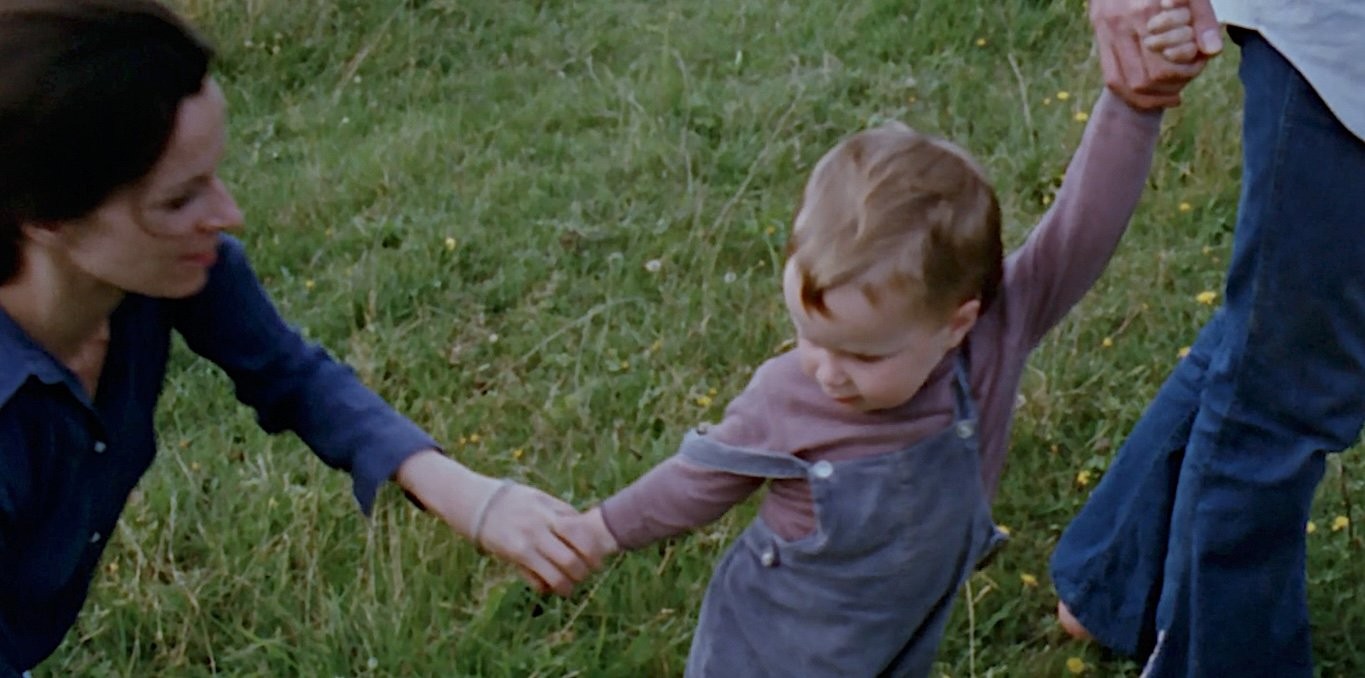A Film for Max

In this film, filmmaker Derek May turns his camera on his own domestic life, attempting to show it "as it is," without the conventional structure imposed by filmmaking. He seeks to reflect the essential aloneness of human existence—a life suspended, a being unmotivated. Adult life is depicted in black and white, while the life of his infant son, Max, is shown in color. This contrast evokes the loss of joy that accompanies maturity and knowledge.
| Director | Derek May |
| Share on |
Can domestic life be made visible—even cinematic? In a filmic exploration that flirts with the experimental, Montreal-based British filmmaker Derek May turns his camera toward his family life. The central figure of this intimate world is first and foremost his wife, Québécoise Patricia Nolin, whose delightful accent and reflections transform her into the heroine of a Cassavetes film gone European, or a Godard film gone American. Refusing the classic narrative structure in order to show life as it appears—disordered, fragmented, unstable—May moves restlessly in front of the camera, questions the meaning of life, or plays lightly with his wife. A Film for Max is also a kind of legacy to their son, Max, whose existence as a young child offers glimpses of the joyful vitality present in all beings. The adult life depicted in the film bears witness to a loss of innocence, despite the disorderly attempts to stay afloat: friendship, creation, family, play. Above all, it is about not taking oneself too seriously—even in the adventure that is cinema. With cinematography by Martin Duckworth and Claude Beaugrand, the film also bears witness to a particularly fertile period: the early 1970s, with its profound social and aesthetic upheavals.
Naomie Décarie-Daigneault
Tënk's Artistic Director

-

English
1h14
Language: English -

Français
1h14
Language: Français
Subtitles: Français
- Année 1970
- Pays Canada
- Durée 74
- Producteur ONF / NFB
- Langue English
- Sous-titres French, English
- Résumé court A filmmaker turns his camera on his own domestic life, attempting to show it "as it is," without the conventional structure imposed by filmmaking.
- Ordre 3
- TLF_Applismb_CA 1
- Date édito CA 2025-10-03
Can domestic life be made visible—even cinematic? In a filmic exploration that flirts with the experimental, Montreal-based British filmmaker Derek May turns his camera toward his family life. The central figure of this intimate world is first and foremost his wife, Québécoise Patricia Nolin, whose delightful accent and reflections transform her into the heroine of a Cassavetes film gone European, or a Godard film gone American. Refusing the classic narrative structure in order to show life as it appears—disordered, fragmented, unstable—May moves restlessly in front of the camera, questions the meaning of life, or plays lightly with his wife. A Film for Max is also a kind of legacy to their son, Max, whose existence as a young child offers glimpses of the joyful vitality present in all beings. The adult life depicted in the film bears witness to a loss of innocence, despite the disorderly attempts to stay afloat: friendship, creation, family, play. Above all, it is about not taking oneself too seriously—even in the adventure that is cinema. With cinematography by Martin Duckworth and Claude Beaugrand, the film also bears witness to a particularly fertile period: the early 1970s, with its profound social and aesthetic upheavals.
Naomie Décarie-Daigneault
Tënk's Artistic Director
-

English
Duration: 1h14Language: English1h14 -

Français
Duration: 1h14Language: Français
Subtitles: Français1h14
- Année 1970
- Pays Canada
- Durée 74
- Producteur ONF / NFB
- Langue English
- Sous-titres French, English
- Résumé court A filmmaker turns his camera on his own domestic life, attempting to show it "as it is," without the conventional structure imposed by filmmaking.
- Ordre 3
- TLF_Applismb_CA 1
- Date édito CA 2025-10-03
